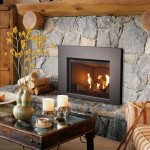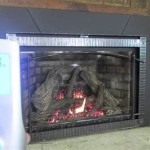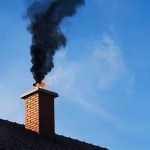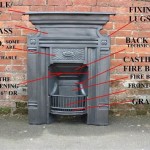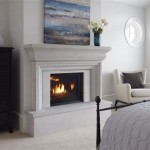Here's an article about indoor fireplace ideas, written according to the specifications:
Indoor Fireplace Ideas: Enhancing Home Ambiance and Functionality
The indoor fireplace stands as a focal point within a home, offering warmth, visual appeal, and a sense of comfort. Its design and functionality have evolved significantly over time, moving beyond mere heating solutions to become integral components of interior design. Exploring diverse fireplace ideas allows homeowners to tailor this feature to their aesthetic preferences and practical needs.
The selection of an appropriate fireplace involves considering several factors, including the home's architectural style, the available space, the desired level of heat output, and the homeowner's budget. Materials, fuel types, and safety features also play a crucial role in the decision-making process. A well-chosen fireplace can significantly enhance the value and overall desirability of a property.
Fireplace Style and Architectural Harmony
One of the primary considerations when choosing a fireplace is its style. The fireplace should complement the existing architectural design of the home, creating a cohesive and visually appealing environment. Traditional homes often benefit from classic fireplace designs featuring ornate mantels, detailed moldings, and natural stone surrounds. These elements evoke a sense of timeless elegance and sophistication.
For contemporary homes, a minimalist fireplace design may be more suitable. Clean lines, simple geometric shapes, and the use of materials like stainless steel, concrete, or glass can create a sleek and modern aesthetic. These fireplaces often incorporate features such as linear burners or glass enclosures that accentuate the flame's visual appeal without overwhelming the space.
Transitional fireplaces blend elements of both traditional and contemporary styles, offering a versatile option for homes with eclectic décor. These fireplaces may feature a simplified mantel design with subtle detailing, combined with modern materials and finishes. This approach allows for a seamless integration into various interior design schemes.
Rustic fireplaces emphasize natural materials and textures, creating a warm and inviting atmosphere. Stone, brick, and wood are commonly used in these designs, often incorporating features like exposed beams, reclaimed wood mantels, and stacked stone surrounds. Rustic fireplaces are particularly well-suited for cabins, lodges, and homes with a country-inspired aesthetic.
Fuel Type and Efficiency
The type of fuel used in a fireplace directly impacts its efficiency, environmental impact, and overall cost of operation. Several options are available, each with its own set of advantages and disadvantages.
Wood-burning fireplaces are a traditional choice, offering the quintessential fireplace experience with the crackling sound and authentic aroma of burning wood. However, wood-burning fireplaces are generally less efficient than other options, as a significant portion of the heat is lost through the chimney. They also require regular maintenance, including chimney cleaning and wood storage.
Gas fireplaces offer a convenient and efficient alternative to wood-burning models. They burn natural gas or propane, providing consistent heat output with minimal maintenance. Gas fireplaces are easy to operate, often featuring remote controls and programmable thermostats. They are also available in a variety of styles, including models that mimic the appearance of a traditional wood-burning fire.
Electric fireplaces are the most convenient and energy-efficient option. They do not require a chimney or venting system, making them easy to install in virtually any room. Electric fireplaces use electricity to generate heat and often include realistic flame effects that can be operated independently of the heating function. This allows homeowners to enjoy the visual appeal of a fireplace without the added warmth during warmer months.
Ethanol fireplaces are a relatively new option that burns liquid ethanol fuel. They are ventless, meaning they do not require a chimney or flue, and produce a clean-burning flame with minimal emissions. Ethanol fireplaces are often used as decorative features, adding a touch of modern elegance to any space. However, they typically provide less heat output than other types of fireplaces and require the regular purchase of ethanol fuel.
Fireplace Design Elements and Customization
Beyond the basic style and fuel type, several design elements can be customized to create a unique and personalized fireplace. The mantel is a prominent feature that provides a focal point above the firebox. Mantels can be made from a variety of materials, including wood, stone, concrete, and metal, and can be designed to match the home's architectural style.
The fireplace surround encompasses the area around the firebox, providing a decorative frame that enhances the overall aesthetic. Common surround materials include brick, stone, tile, and wood. The surround can be designed to blend seamlessly with the mantel or to create a contrasting accent that draws attention to the fireplace.
The firebox itself can also be customized with various features, such as decorative logs, glass beads, or ceramic stones. These elements add visual interest to the firebox and create a more realistic or contemporary flame effect. The interior lining of the firebox can also be customized with different materials and colors to further enhance the fireplace's appearance.
Built-in shelving or cabinetry can be incorporated around the fireplace to provide storage and display space. This is a particularly useful feature in smaller homes or apartments where space is limited. Built-ins can be designed to match the fireplace's style and materials, creating a cohesive and functional unit.
Wall-mounted fireplaces offer a space-saving solution for homes with limited floor space. These fireplaces are typically electric or ethanol-burning and can be easily installed on any wall. They are available in a variety of sizes and styles, ranging from sleek and modern designs to more traditional options.
Double-sided fireplaces can be used to divide two rooms or to create a focal point visible from multiple areas of the home. These fireplaces are often used in open-concept layouts to define different living spaces while maintaining a sense of connection. Double-sided fireplaces require careful planning and installation to ensure proper ventilation and safety.
Outdoor fireplaces bring the warmth and ambiance of a fireplace to an outdoor living space. These fireplaces are typically constructed from durable materials like stone or brick and can be designed to match the home's exterior architecture. Outdoor fireplaces are perfect for creating a cozy and inviting gathering space for friends and family.
Fireplace inserts are designed to be installed inside an existing masonry fireplace, improving its efficiency and reducing emissions. Inserts are available in wood-burning, gas, and electric models and can significantly enhance the performance of an older fireplace. They also offer a more modern and aesthetically pleasing appearance.
Ultimately, the ideal indoor fireplace design is one that reflects the homeowner's personal style, meets their practical needs, and enhances the overall ambiance of their home. By considering factors such as architectural harmony, fuel type, and design elements, homeowners can create a fireplace that serves as a beautiful and functional centerpiece for years to come.

Indoor Living And Fireplace Design Ideas Outdoor Advice Greatrooms

40 Best Fireplace Ideas Indoor Designs

40 Fabulous Fireplace Design Ideas For Any Budget Or Style

Indoor Fireplace Ideas Stone Solutions Maine

Top 50 Modern Fireplace Designs

65 Best Stone Fireplace Design Ideas To Ignite Your Decor Modern Indoor

Red Hot Fireplace Ideas

An Indoor Gas Fireplace For The Home Lawn Leisure

Getting Cozy Fireplace Ideas For Your Home Wayne Homes

50 Stylish Fireplace Ideas To Boost Your Home S Value
Related Posts

